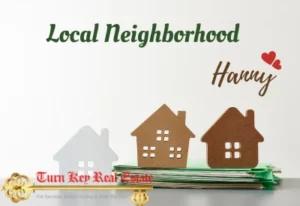
The term “local neighborhood” refers to an area wide enough to cover your residential area plus nearby stores such as the “neighborhood grocery store.”
You want to be sure all essential shops and services are located nearby. This would include grocery stores, gas stations, dry cleaners, and convenience stores. There should also be fairly convenient access to local highways, major traffic routes, and mass transit.
One thing you should look out for, though. If your local shopping center is in decline, it could be an indicator that the local neighborhood is in decline, too. Check to see if a lot of storefronts in your local center are vacant or available for lease. If they are, you might want to consider moving your purchase a few blocks.
The Residential Neighborhood
Within your residential neighborhood, you want the nearby properties to be fairly homogeneous – alike in style, size, and structure. This does not mean they should all be exactly the same, either. Owners will put their own unique stamp on their homes.
Your future home should be located as close to the center of this neighborhood as possible. Avoid the edges. In short, you do not want your property to back or side to a busy street. If you are buying a single family home, you do not want your property to border a condominium, apartment complex, business, school, or even a park.
You also want to make sure the street you buy on is not used as a shortcut between two busier streets. Nor do you want to buy a house on a corner lot, as those tend to attract more street traffic and are not as safe for children. Buy in the middle of the block or on a cul de sac.
Like we said before, you want your home to be neatly tucked away in the center of your residential neighborhood.
If you have any questions, you can contact us at +1(516) 829-2205, +1(516) 647-4289. Google My Business Profile.






